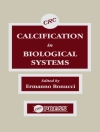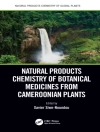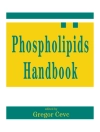This book focuses on the emerging research in the field of treatment of solid tumors or cancer with new drug delivery systems using nanotechnology. Nanotechnology has given us a good scope for development of new innovative drug delivery strategies to increase the therapeutic efficacy of anticancer drugs with reduced off-target side effects. Cancer is one of the main causes of death worldwide due to the limitations of classical therapies such as low solubility of active drugs, toxic side effects on healthy cells and resistance of tumor cells. These issues are partly solved by the recent development of polymeric nanoparticles, which improve drug absorption and the therapeutic index, while reducing side effects. Drug carriers must be biocompatible, biodegradable and non-immunogenic. Coupled to a ligand that has affinity for that particular cell, polymeric nanoparticles are used to target specifically malignant cells or tissues and, in turn, improve drug stability. This book presents the latest advances in the application of polymeric particles for cancer treatment, with focus on the tumor microenvironment, synthesis, active and passive targeting, patents, targeting over-expressed receptors, tumor-targeting ligands, theranostics, glioblastoma tumors, lung cancer, breast cancer, prostate cancer and p H-responsive nanoparticles
Tabla de materias
Chapter 1. The tumor microenvironment.- Chapter 2. Methods of formulation of polymeric nanoparticles.- Chapter 3. Natural polymers based nanoparticles targeted to solid tumors.- Chapter 4. Optimization of physicochemical properties of polymeric nanoparticles for targeting solid tumors.- Chapter 5. Passive and active targeting approaches for solid tumors.- Chapter 6. Polymeric nanoparticles entrapping natural drugs for cancer therapy.- Chapter 7. Polymeric nanoparticles entrapping drug combinations targeted to solid tumors.- Chapter 8. Ligands specific to over-expressed receptors in solid tumors.- Chapter 9. Ligand targeted polymeric nanoparticles for cancer chemotherapy.- Chapter 10. Polymeric nanoparticles as theranostics for targeting solid tumors.- Chapter 11. Oral delivery of polymeric nanoparticles for solid tumors.- Chapter 12. Polymeric nanoparticles to target glioblastoma tumors.- Chapter 13. Polymeric nanoparticles to target lung cancer.- Chapter 14. Polymer based nanoplatforms for targeting breast cancer.- Chapter 15. PH-Sensitive polymeric nanoparticles for cancer treatment.- Chapter 16. Polymeric nanoplatforms for targeted treatment of prostate cancer.- Chapter 17. Cellular internalization and toxicity of polymeric nanoparticles.- Chapter 18. Prospects and challenges in the treatment of solid tumors.
Sobre el autor
Dr. Santwana Padhi did her Ph D from Department of Pharmaceutics, Jamia Hamdard with a core expertise in cancer nanotherapeutics. Her research interest focuses on pre-clinical and clinical studies related to the drug entrapped targeted nanosystems for amelioration of solid tumors, design and evaluation of antibiotic loaded microparticles embedded polymeric scaffolds for tissue engineering and formulation, optimization of different process variables for loading different drugs in biodegradable nanomatrices for enhancing the entrapment efficiency. Prior to her doctoral degree, she worked as a research assistant at National Institute of Immunology (NII). She worked as a MSL in Biocon in oncology and dermatology domain. Presently she is working as a Scientific Officer at KIIT TBI and freelance editor in Manuscript Edit. She was granted senior research fellowship (SRF) from ICMR, junior research fellowship (JRF) from DBT and Award of Excellence for scientific contribution from Jamia Hamdard University for two consecutive years. She has more than 4 years of research experience, mentored more than 5 postgraduate and 10 undergraduate students and has published research articles and review articles in peer reviewed journals.
Dr. Anindita Behera is Associate Professor, Department of Pharmaceutical Analaysis, Siksha O Anusandhan Deemed to be Universtity. She did her masters from Pune University, India and Ph D from Siksha O Anusandhan Deemed to be Universtity. She has developed new analytical methods for drug formulations used in treatment of AIDS. Currently she is involved in green synthesis of nanomaterial targeting different life risk diseases. She has more than 15 years of experience in research and academics. She has published number of research and review articles in peer reviewed journals. She has also contributed a number of book chapters in books published in Elsevier, Springer, CRC Press, and Taylor & Francis group. She has guided three Ph D scholars, eleven post graduate scholars and 30 undergraduate students.
Dr. Eric Lichtfouse is Professor of environmental sciences and scientific writing at Aix Marseille University, Xi’an Jiaotong University and the University of Shanghai for Science and Technology. He has invented carbon-13 dating, a molecular-level method allowing to study the dynamics of organic compounds in temporal pools of complex environmental media. He has discovered temporal pools of individual substances in complex media such as soils. He is Chief Editor and founder of the journal Environmental Chemistry Letters, and the book series Sustainable Agriculture Reviews and Environmental Chemistry for a Sustainable World. He is the author of the book Scientific Writing for Impact Factor Journals, which includes an new writing tool, the micro-article, allowing to identify results novelty. He has awards in analytical chemistry and scientific editing. Insport, he is XTerra World Vice-Champion in his age category.












